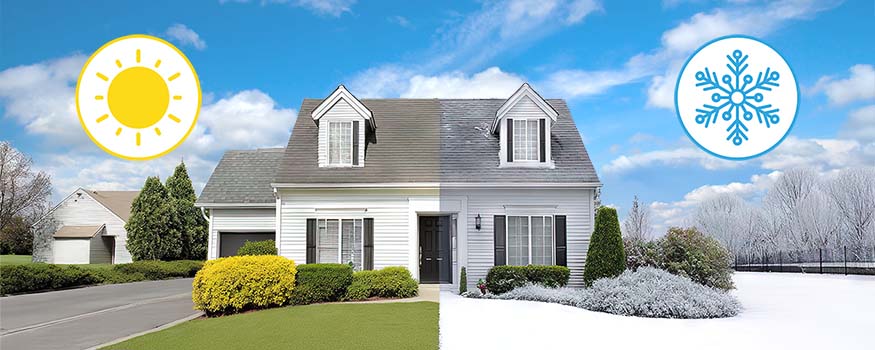As leaves begin to hint at fall and the air takes on a crisp edge, Southern homeowners face one of the trickiest HVAC questions: When do I stop running air conditioning and start heating? In North Carolina, fall can bring dramatic temperature swings — warm days followed by chilly nights. Making the wrong switch too early (or too late) can lead to wasted energy, discomfort, and system strain.
In this guide, Mac Heating & Air Conditioning walks you through how to time the transition, what checks you should do before switching, and how to make the change as smooth and efficient as possible.
1. Watch the Weather Trends (Don’t Rely on a Single Day)
One of the most reliable cues is sustained temperature patterns. Experts suggest that once daytime highs consistently hover around 60–65 °F and evening lows often dip into the 50s or below, it’s likely time to consider switching from cooling to heating.
In the South, that window typically arrives in late October or early November, but in more elevated or northern zones (e.g. in the foothills of NC/TN), the shift may happen earlier. Use a week’s worth of forecasts, not just a single cool evening, to make your decision.
2. Use a Programmable or Smart Thermostat
Switching back and forth every evening is tedious — and inefficient. A programmable or smart thermostat lets you automate temperature settings based on daily routine, create dual setpoints during the shoulder season, and save energy by lowering heat when you’re away or asleep.
3. Check & Replace Your Air Filter Before Switching
After months of cooling, your air filter may be clogged with dust, pollen, and debris. A dirty filter limits airflow, forces more strain on your blower, and reduces your heating system’s efficiency. Swap or clean filters just before switching over so that your furnace or heat mode starts fresh.
4. Inspect and Clear Ducts, Vents & Registers
Over the summer and into early fall, ducts and vents can accumulate dust, leaves, pet hair, and other debris. Before heating mode kicks in: vacuum or wipe off vent covers, ensure no blockages obstruct airflow, and consider having ducts sealed if they’re old or leaky. Proper airflow ensures warm air reaches all rooms evenly.
5. Test the Heating (Pilot, Ignition, and Airflow)
Don’t wait until the first cold snap. After switching your thermostat to heat, listen for unusual noises, feel for uneven temperatures, and ensure pilot lights or ignition systems function correctly. If you notice anything odd, call a professional before you’re stuck cold.
6. Seal Air Leaks & Insulate Strategically
One of the most overlooked components of efficient heating is sealing drafts in doors, windows, or poorly insulated zones. Gaps can let warm air escape and cold air in — making your heating system work harder. Use weather stripping, caulk, or foam sealants to tighten up problem areas.
7. Avoid Over-Heating; Use Moderate Setpoints
It’s tempting to crank the heat when the chill settles in — but setting your thermostat too high wastes energy. Experts recommend aiming for around 68 °F during daytime and lowering it slightly at night. Smart thermostats can help by automatically reducing setpoints when you’re away or asleep.
8. Consider Zoning or Upgrades
If you have a multi-story home or rooms that stay cooler/hotter than average, now is a good time to consider zoning systems, upgraded insulation, or a high-efficiency furnace or heat pump.
For homeowners in the south, timing your switch from AC to heat isn’t just a comfort decision — it’s a smart energy move. Monitor trends, prep your system, and make the change deliberately.
Need help with inspection, filter replacement, thermostat setup, or duct sealing? Mac Heating & Air Conditioning is licensed in all our service areas. Contact us today to schedule your fall HVAC maintenance and ensure your home stays cozy when the cold hits.


